The Battle of the River Plate (a.k.a. Pursuit of the Graf Spee in the United States) is a 1956 British war film in Technicolor and VistaVision by the writer-director-producer team of Michael Powell and Emeric Pressburger. The film stars John Gregson, Anthony Quayle, and Peter Finch. It was distributed worldwide by Rank Film Distributors Ltd.
| The Battle of the River Plate (Pursuit of the Graf Spee) | |
|---|---|
Theatrical release poster | |
| Directed by | Michael Powell Emeric Pressburger |
| Produced by | Michael Powell Emeric Pressburger |
| Written by | Michael Powell Emeric Pressburger |
| Starring | John Gregson Anthony Quayle Peter Finch |
| Narrated by | David Farrar |
| Music by | Brian Easdale |
| Cinematography | Christopher Challis |
| Edited by | Reginald Mills |
| Distributed by | Rank Film Distributors Ltd. |
Release date |
|
Running time | 119 minutes |
| Country | United Kingdom |
| Language | English |
The film's storyline concerns the Battle of the River Plate, an early World War II naval battle in 1939 between a Royal Navy force of three cruisers and the German pocket battleship Admiral Graf Spee.
Screenplay
In the early months of the Second World War, Nazi Germany's Kriegsmarine sends out merchant raiders to attack Allied shipping. The Royal Navy responds with hunting groups whose mission is to stop them. The group that finds the heavily armed pocket battleship Admiral Graf Spee near South America is outgunned: Graf Spee is equipped with long-range 11-inch guns, while the British heavy cruiser Exeter has much lighter 8-inch guns, and the light cruisers Ajax and Achilles have 6-inch guns. Despite this, they go straight to the attack.
The British are led by Commodore Harwood (Anthony Quayle), with Captain Woodhouse (Ian Hunter) commanding flagship Ajax, Captain Bell (John Gregson) Exeter and Captain Parry (Jack Gwillim) Achilles. The British use their superior numbers to "split her fire" by attacking from different directions, but Graf Spee, under Captain Hans Langsdorff (Peter Finch), inflicts much damage on her foes; Exeter is particularly hard hit and is forced to retire.
However, Graf Spee sustains damage herself, and takes refuge in the neutral port of Montevideo, Uruguay to make repairs. According to international law, the ship may remain at neutral harbour only long enough to make repairs for seaworthiness, not to refit her for battle. With reinforcements too far away, the British spread disinformation that an overwhelming force is lying in wait, hoping to buy time: while they are initially demanding that the Uruguayan authorities send the Graf Spee out to sea within 24 hours, as the law dictates, they suddenly seem to lose interest and appear to tolerate her staying at anchor in Montevideo for as long as required. This is a bluff intended to make the Germans believe that more British warships have arrived, when only the cruiser HMS Cumberland has. Taken in by this ruse, Langsdorff takes his ship out with a skeleton crew aboard, and as she heads down the River Plate for the open sea, he orders her scuttled.
At Sea
- Peter Finch as Captain Hans Langsdorff, Admiral Graf Spee
- Bernard Lee as Captain Patrick Dove, MS Africa Shell
- Andrew Cruickshank as Captain William Stubbs, SS Doric Star
- Peter Dyneley as Captain John Robison, SS Newton Beech
- Anthony Quayle as Commodore (later Rear-Admiral) Henry Harwood, HMS Ajax
- Ian Hunter as Captain Charles Woodhouse, HMS Ajax
- Patrick Macnee as Lieutenant Commander Ralph Medley, HMS Ajax
- John Gregson as Captain Frederick "Hookie" Bell, HMS Exeter (Gregson served in the Royal Navy during the War)
- Jack Gwillim as Captain Edward Parry, HMS Achilles (Gwillim served 20 years in the Royal Navy, rising to the rank of Commander)
- John Le Mesurier as the Chaplain of HMS Exeter (minor role)
- Barry Foster as Able Seaman Roper, HMS Exeter (uncredited)
Ashore
- Lionel Murton as Mike Fowler, American radio reporter in Montevideo
- Christopher Lee as Manolo, bar owner in Montevideo harbour
- Edward Atienza as Pop, Mike Fowler's gaucho assistant
- April Olrich as Dolores (singing voice by Muriel Smith)
- Anthony Bushell as Eugen Millington-Drake, the British Minister in Uruguay
- Michael Goodliffe as Captain Henry McCall, British Naval Attaché in Buenos Aires
- Peter Illing as Dr Alberto Guani, Uruguayan Foreign Minister
- William Squire as Ray Martin, British SIS agent in Montevideo
- John Chandos as Dr Otto Langmann, the German Minister in Uruguay
- Douglas Wilmer as M. Desmoulins, the French Minister in Uruguay
- Roger Delgado as Captain Varela, Uruguayan Navy
- Cast notes
- Future director John Schlesinger has a small part as a prisoner on board the Graf Spee, as does Captain Patrick Dove of Africa Shell, who is himself portrayed by Bernard Lee.
- Anthony Newley and Donald Moffat have small parts as a radio operator and a lookout. Moffat was making his film debut, as was Jack Gwillim.
The Battle of the River Plate had its genesis in an invitation to Michael Powell and Emeric Pressburger to attend a film festival in Argentina in 1954. They decided they couldn't afford to take the time from their schedules unless it was a working holiday, and used the trip to research the defeat of the Admiral Graf Spee. They came across the "hook" for their story when one of the surviving British naval officers gave Pressburger a copy of Captain Patrick Dove's book I Was A Prisoner on the Graf Spee, which became the basis of the human story of the film.
Principal photography began on 13 December 1955, the sixteenth anniversary of the battle. The HMS Ajax and River Plate Association reportedly sent a message to the producers: "Hope your shooting will be as successful as ours". Location shooting for the arrival and departure of the Graf Spee took place at the port of Montevideo, using thousands of locals as extras. However, the scenes showing Graf Spee sailing from Montevideo were shot in the Grand Harbour at Valletta in Malta, and the launch taking McCall out to HMS Ajax was filmed in Gozo harbour on Malta's northern island.
The Battle of the River Plate was shot in VistaVision, a wide screen orthographic process using a horizontal film feed.
Two songs written by composer Brian Easdale were used in the film, "Dolores' Song" and "Rio de la Plata". Both were acted by April Olrich as "Dolores", with singing voice dubbed by Muriel Smith.
- Pocket battleship Admiral Graf Spee played by heavy cruiser USS Salem
- The supply ship Altmark played by the fleet oiler RFA Olna.
- HMS Ajax, flagship, played by HMS Sheffield
- HMS Exeter played by HMS Jamaica
- HMNZS Achilles played by herself (at the time in service with the Indian Navy as INS Delhi)
- HMS Cumberland played by herself when she joins the British squadron after the battle, (and by HMS Jamaica in the final scenes off Montevideo).
- German freighter Tacoma, which took the crew off Graf Spee before scuttling, played by RFA Fort Duquesne.
- Gunboat Uruguay, boarding the Tacoma, was played by a British Ton-class minesweeper.
- HMS Birmingham was used for the firing of some of the guns, and to depict the explosions on the foredeck of Exeter, and as Graf Spee during the Replenishment scene with Altmark, as well as the scene on the deck of Graf Spee showing the flag-draped coffins of dead German sailors laid out for burial in Montevideo.
- Destroyers HMS Battleaxe and USS William R. Rush were used as camera ships.
Most of the action of the battle and prior to it takes place on real ships at sea. The producers had the advantage of having elements of the Mediterranean Fleet of the Royal Navy available for their use, and USS Salem to play the part of Admiral Graf Spee, although she had a different number of main turrets. The producers did make use of a 23-foot model of Salem (with details only on the side being shot) in a six-foot-deep tank at Pinewood Studios for scenes depicting hits during the battle, and also for the blowing-up of Admiral Graf Spee, which was assembled from multiple takes from different angles.
In an early scene, it is claimed that the Graf Spee is being disguised by the ship's carpenters – using features such as a false funnel – as an American cruiser, a trick typical of commerce raiders. The US Navy would not allow any Nazi insignia to be displayed on the Salem so the wartime German flag being hoisted and flown was filmed on a British ship. This is also the explanation as to why the crew of the Graf Spee are seen wearing US Navy pattern helmets rather than German "Coal Scuttles" – whilst the film-makers wanted to achieve an accurate impression and use German helmets they were refused permission. This aspect is sometimes described as a "goof" on the part of the film-makers, but was in fact a circumstance beyond their control.
It was remarkable that two of the original ships, HMS Achilles and Cumberland were available for filming fifteen years after the events depicted. Cumberland was a disarmed trials ship without her 8" gun turrets at this time and was refitted with lattice masts, but she is very recognisable as the last of the three-funnelled heavy cruisers to remain in service. (In the final scenes, Jamaica represented Cumberland as one of the British trio waiting off Montevideo). This use of real warships was in line with an Admiralty policy of co-operation with film-makers, which saw the corvettes HMS Coreopsis and HMS Portchester Castle reactivated in 1952 for the film version of The Cruel Sea; the cruiser HMS Cleopatra and the minelayer HMS Manxman used in the 1953 film Sailor of the King, and the destroyer HMS Teazer and frigate Amethyst used in the 1955 film Yangtse Incident: The Story of H.M.S. Amethyst.
HMNZS Achilles had been sold to the newly formed Indian Navy in 1948, becoming the Delhi. The flagship HMS Ajax was actually her sister ship, and would have looked identical to Achilles, while the original HMS Exeter was a two-funnelled half-sister of the Cumberland. HMS Sheffield and HMS Jamaica, which played Ajax and Exeter, had higher superstructures and more guns, which were mounted in triple turrets. Though different from the ships they represented, both these light cruisers had played a major part in the wartime campaign against the large German surface raiders which began at the Battle of the River Plate, including Bismarck in 1941, Admiral Hipper in 1942, Scharnhorst in 1943, and Tirpitz in 1944.
The use of real ships allows the film to pay particular attention to detail even though the Graf Spee was portrayed by the American heavy cruiser USS Salem which is visually distinct from the German Pocket Battleship. This includes the warning bells ringing before each salvo, the scorching on the gun barrels after the battle, and the accurate depiction of naval procedures. The film depicts Graf Spee and Altmark using the complex procedure of alongside refuelling; actually the Germans used the slower but safer method of astern refuelling, but the alongside method is much more dramatic for film purposes, and by 1955 was standard procedure for the British ships involved (see list above). Similarly, although the scene when Harwood meets with his captains on board Ajax is fictional, it was created for the movie in order to explain the tactical situation to the audience. The battle is seen from the perspective of the British ships, and that of the prisoners captured from nine merchantmen and held in Graf Spee.
The film devotes nearly twenty minutes to the battle, which actually lasted a little more than an hour before becoming a chase into Montevideo. The initial minutes from the spotting of Graf Spee at 0614, to her opening fire at 0618, and the British ships returning fire from 0620 are depicted in real time. In reality Graf Spee's gunfire did not "straddle" Exeter until 0623, after three salvoes, and her main armament fire was not "split" between the British ships until 0630, although these events are shown happening immediately. Exeter's bridge and forward turrets were knocked out at 0630, but at this point the film begins to telescope the sequence of events.
Commodore Harwood is shown wearing the shoulder tabs and sleeve rings of a Rear Admiral from the start, although he was only promoted to this rank after the battle. This is historically correct, as 'Commodores of the first class' wore those insignia at the time. Exeter's chaplain is also correctly depicted wearing a civilian dark suit and clerical collar; it was not until later in the war that naval chaplains adopted military uniform as a security measure.
The Battle of the River Plate only hints at one aspect of the story: t
Watch movie The Battle Of The River Plate Film online on Amazon
Watch movie The Battle Of The River Plate Film online
Watch The Movie On PrimeJolly Days Full HD Movie Download
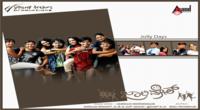
Mulzim Full HD Movie Download
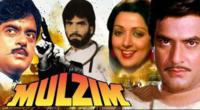
Maa Aur Mamta Full HD Movie Download

Karma Full HD Movie Download

Aakhri Dao (1975) Full HD Movie Download
.jpg)
Garam Bazaar-Alias Miss Bharti Full HD Movie Download
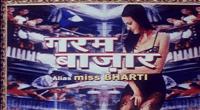
Eraser Full HD Movie Download

Victoria House Full HD Movie Download
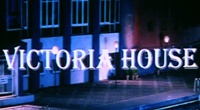
Chetabadi Full HD Movie Download
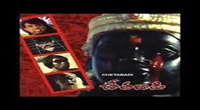
Harry Potter and the Goblet of Fire Full HD Movie Download
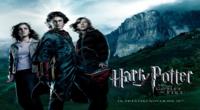
Athirathram Full HD Movie Download
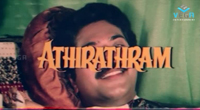
Adikkurippu Full HD Movie Download

Enga Ooru Paatukkaaran Full HD Movie Download

Soori Full HD Movie Download

Edurinti Mogudu Pakkinti Pellam Full HD Movie Download
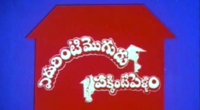
Prema Paga Full HD Movie Download
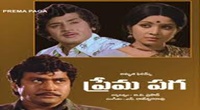
Jai Santoshi Mata Full HD Movie Download

Police Ante Veederaa Full HD Movie Download

Sree Lekha Full HD Movie Download
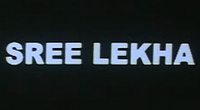
Dostana (2008) Full HD Movie Download
.jpg)
Chak De India Full HD Movie Download

Download latest Movie from bollywood
- 1> baaghi 3
- 2> THE SKY IS PINK MOVIE FULL STORY AND REVIEW
- 3> Luka Chuppi
- 4> TO ALL THE BOYS I’VE LOVED BEFORE
- 5> Kabir Singh
- 6> Street Dancer 3D
- 7> Simmba
- 8> Gone Girl
- 9> The Girl Who Lived
- 10> Ludo
- 11> DILWALE DULHANIA LE JAYENGE
- 12> GUILTY
- 13> The Godfather
- 14> Adventures of Rusty
- 15> Sooryavanshi
- 16> Satyameva Jayate 2
- 17> Thappad
- 18> Bhool Bhulaiyaa 2
- 19> KGFChapter 2
- 20> Mardaani 2
- 21> Pinjar
- 22> Shivaji maharaj
- 23> Ek Villian 2
- 24> Hungama 2
- 25> Divergent
- 26> Mumbai Saga
- 27> The Internship
- 28> HIT (telugu)
- 29> Panga
- 30> The perfect date
- 31> 16 December
- 32> Gopala Gopala (Telugu)
- 33> Brahmastra
- 34> Gangubai Kathiawadi
- 35> Manmadhudu
- 36> Nenu local
- 37> Mahanati
- 38> Shatamanam bavathi
- 39> Lagaan
- 40> After
- 41> MOM
- 42> Shamshera
- 43> Raguvaran BTech
- 44> Khakee
- 45> The villain
- 46> OM
- 47> Mr. perfect
- 48> Bueatifull mind
- 49> Hichki
- 50> Gabbar Singh
- 51> Jogi
- 52> Before Sunrise
- 53> Before Sunset
- 54> Before Midnight
- 55> The Big Bull
- 56> Top Gun: Maverick
- 57> The Purge
- 58> The Sky is Pink
- 59> Laxmmi Bomb
- 60> Sadak 2
- 61> Sufna
- 62> Prithviraj
- 63> PK
- 64> Coolie No 1(2020)
- 65> Black Widow
- 66> Dear Zindagi
- 67> Dil Bechara
- 68> PHIR HERA PHERI
- 69> WAR
- 70> Dostana
- 71> RRR: Roudram Ranam Rudhiram
- 72> Maidan
- 73> Dabbang 3
- 74> Chhalaang
- 75> life as we know it
- 76> SherShaah
- 77> Sandeep Aur Pinky Faraar
- 78> Event Horizon
- 79> 83
- 80> Radhe: Your Most Wanted Bhai
- 81> Gunjan Saxena: The Kargil Girl
- 82> Mr India
- 83> Vivah
- 84> Anokha Bandhan
- 85> Ghost
- 86> Bhoot: Part One - The Haunted Ship
- 87> Haseen Dilruba
- 88> Laal Singh Chaddha
- 89> Qismat
- 90> Rajput
- 91> Drive
- 92> Dil Chahta Hai
- 93> Dil Ki Baazi
- 94> Dil Ka Rishta
- 95> Teesri Manzil
- 96> Dil
- 97> Love Aaj Kal
- 98> Khaali Peeli
- 99> Bunty Aur Babli 2
- 100> Atrangi Re
- 101> Gulabo Sitabo
- 102> Jodi
- 103> Suraj Pe Mangal Bhari
- 104> Deewana
- 105> Attack
- 106> Sardar Udham Singh
- 107> Toofan
- 108> THE LOVEBIRDS
- 109> Jersey
- 110> Ginny Weds Sunny
- 111> Thalaivi
- 112> Shiddat
- 113> Angels vs Zombies
- 114> Koi Mil Gya
- 115> Thank God
- 116> Bhuj: The Pride of India
- 117> Hum Aapke Hain Kaun
- 118> The Platform
- 119> Bird Box
- 120> Roohi Afzana
- 121> Torbaaz
- 122> Nikamma
- 123> World War Z
- 124> Extraction
- 125> Train to Busan
- 126> Life of Pi
- 127> SHAADI MEIN JROOR AANA
- 128> Himmat Aur Mehnat
- 129> To All The Boys: P.S. I Still Love You
- 130> Mimi
- 131> Good Newwz
- 132> Shubh Mangal Zyada Saavdhan
- 133> Raabta
- 134> Harry Potter and the Philosopher's Stone
- 135> Harry Potter and the Chamber of Secrets
- 136> Chhapaak
- 137> War of the Worlds
- 138> Harry Potter and the Prisoner of Azkaban
- 139> Harry Potter and the Goblet of Fire
- 140> MURDER MYSTERY
- 141> Shakuntala Devi
- 142> Bachchan Pandey
- 143> Jayeshbhai Jordar
- 144> Sheer Qorma
- 145> Saina
- 146> 'O' Pushpa I hate tears
- 147> Kedarnath
- 148> MS Dhoni The Untold Story
- 149> Chhichhore
- 150> Badhaai Ho
- 151> Unstoppable
- 152> Oz the Great And Powerful
- 153> The Girl on the Train
- 154> Haathi Mere Saathi 2020
- 155> The Conjuring: The Devil Made Me Do It
- 156> Gandhi Se Pehle Gandhi
- 157> The Song of Scorpions
- 158> Srimanthudu
- 159> Hello Guru Prema Kosame
- 160> Beauty and The Beast
- 161> Black Panther
- 162> Charlie and the Chocolate Factory
- 163> Bole Chudiyan
- 164> Fidaa
- 165> Duvvada Jagannadham
- 166> Bruce Lee: The Fighter
- 167> Hyper
- 168> Yaara
- 169> Red (2020)
- 170> Shivam
- 171> That Is Mahalakshmi
- 172> Nishabdham
- 173> Aashram 2020 web series
- 174> Laxmii
- 175> Mismatched
- 176> STUDENT OF THE YEAR 2
- 177> NAIL POLISH
- 178> Ramprasad Ki Tehrvi
- 179> KAAGAZ
- 180> 12 o Clock
- 181> The Power
- 182> bolo hau
- 183> Tribhanga
- 184> JAMUN
- 185> Madam Chief Minister
- 186> Maasaab
- 187> Aadhaar
- 188> Tanhaji
- 189> Bhaagi 3
- 190> Bhootnath
- 191> MALANG
- 192> Jai Mummy Di
- 193> Haathi Mere Saathi 2021
- 194> Shakeela
- 195> Unpaused
- 196> Annayya
- 197> Vamsoddharakudu
- 198> Mrugaraju
- 199> Narasimha Naidu
- 200> Sankranti
- 201> Manasu Maata Vinadhu
- 202> Anjaane
- 203> Apaharan
- 204> Bachke Rehna Re Baba
- 205> Bewafaa
- 206> Roohi
- 207> Radhe
- 208> Zindagi Khoobsoorat Hai
- 209> Yeh Mohabbat Hai
- 210> Yeh Kya Ho Raha Hai?
- 211> The Tomorrow War
- 212> DehradunDiary
- 213> Meri Shaadi Karaoo
- 214> Matruu Ki Bijlee Ka Mandola
- 215> No One Killed Jesica
- 216> Aag Ka Goola
- 217> Eight Million Dollars
- 218> Three Hundred
- 219> Cats and Dog
- 220> Decoy
- 221> Gold Rush
- 222> You Have Got Mail
- 223> Final Destination three
- 224> Tofan
- 225> Jungle
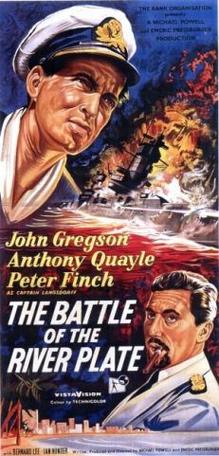 Story of movie The Battle Of The River Plate Film :
Story of movie The Battle Of The River Plate Film : 